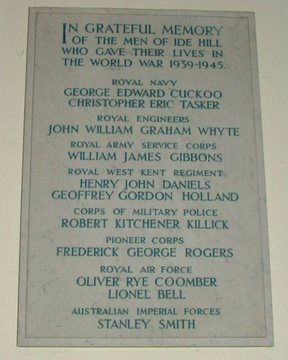
SMITH, Stanley
| Service Number: | NX26449 |
|---|---|
| Enlisted: | 19 June 1940, Enlisted Paddington, New South Wales, Australia |
| Last Rank: | Warrant Officer Class 2 |
| Last Unit: | 2nd/20th Infantry Battalion |
| Born: | Sevenoaks, Kent, England, United Kingdom, 7 January 1904 |
| Home Town: | Not yet discovered |
| Schooling: | Not yet discovered |
| Occupation: | Not yet discovered |
| Died: | Killed in Action, Malaya, 9 February 1942, aged 38 years |
| Cemetery: |
Kranji War Cemetery Special Memorial 32. A. 17. INSCRIPTION DEARLY LOVED & SADLY MISSED BY LOVING WIFE LILY AND SYDNEY RELATIVES , Kranji War Cemetery, Kranji, Singapore |
| Memorials: | Australian War Memorial Roll of Honour, Guildford Soldier's Memorial |
World War 2 Service
| 3 Sep 1939: | Involvement Warrant Officer Class 2, NX26449 | |
|---|---|---|
| 19 Jun 1940: | Enlisted Australian Army (Post WW2), Enlisted Paddington, New South Wales, Australia | |
| 19 Jun 1940: | Enlisted Australian Military Forces (WW2) , Warrant Officer Class 2, NX26449, 2nd/20th Infantry Battalion |
Help us honour Stanley Smith's service by contributing information, stories, and images so that they can be preserved for future generations.
Add my storyBiography contributed by Geoffrey Gillon
He enlisted at Paddington, New South Wales, Australia. He served with the A.I.F. 2/20 Bn. Australian Infantry.
He was 38 and the son of George and Emily Smith; husband of Theodora Vassilika Smith, of Guildford, New South Wales, Australia.
INSCRIPTION on his wargrave chosen by his family reads:
DEARLY LOVED & SADLY MISSED BY LOVING WIFE LILY AND SYDNEY RELATIVES
He is also commemorated and on the Australian national War Memorial. Panel 45, and on the Granville, New South Wales, Australia, Roll of Honour.
In the United Kingdom, he is remembered in the Church of St Mary at Ide Hill near the town of his birth and in the bus shelter on the village Green.
The village of Ide Hill near Sevenoaks has, like many other locations in the county of Kent and elsewhere, two forms of remembrance to honour its victims of war. Usually where two memorials are to be found at a village, they are in the form of a memorial plaque or similar in a place of worship, which is usually the parish church. The other is normally in the form of a ‘traditional’ external war memorial, and which is constructed of some type of stone.
The parish church of St Mary’s contains commemoration plaques to commemorate the local war dead of each of the two world wars and the other form of remembrance is a Bus Shelter which is located on the village green, and is far from ‘traditional.’ Affixed to the Bus Shelter are eight wooden shields, which have emblazoned on them the names of the war dead of both world wars.









